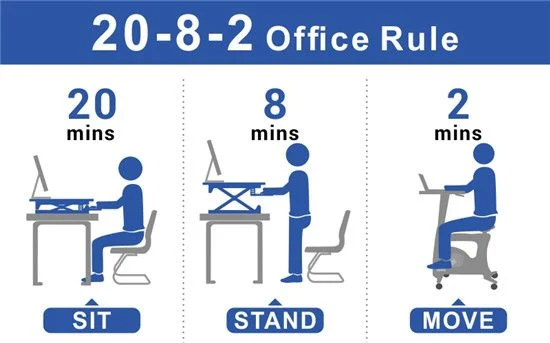In our increasingly digital world, heavy usage of computers and digital screens has become a standard part of daily life. Whether you’re a professional spending long hours at work or a student immersed in online learning, prolonged exposure to screens can take a toll on your eyes. The resulting eye strain caused by excessive digital device use is called Computer Vision syndrome.
The solutions lie in the change of lifestyle of digital device usage. Adopting some simple eye care practices can minimize eye strain and maintain healthy vision. In this blog, we will explore the best practices for eye care tailored explicitly for heavy digital screen users and students.
Maintain proper distance and posture
Position your screen comfortably, typically about an arm’s length away, to reduce digital Eye Strain. Adjust the screen height so that your eyes are level with the top of the screen or slightly below. Also, maintain good posture while sitting, ensuring your back is adequately supported and your neck and shoulders are relaxed.
Practice the 20-20-20 rule
The 20-20-20 rule effectively alleviates digital Eye Strain caused by staring at screens for extended periods. Every 20 minutes, shift your focus away from the screen and look at an object that is roughly at a distance of 20 Ft away for a minimum of 20 seconds. This helps to relax eye muscles and reduce fatigue.
Adjust screen settings and lighting
Optimize your screen settings to reduce eye strain. Adjust the brightness and contrast levels to a comfortable level that suits your environment. Avoid using screens in a dark room or under harsh lighting conditions. Instead, ensure adequate lighting in the room, preferably from indirect sources, to reduce the contrast between the screen and the surrounding area.
Take regular breaks
Frequent breaks are essential for your eyes and overall well-being. Incorporate short breaks into your screen time routine to rest your eyes and prevent strain. Stand up, stretch, and engage in activities that allow your eyes to focus on objects at different distances. This practice not only benefits your eyes but also boosts productivity and concentration.
Use the 20-8-2 rule for prolonged screen time
For long periods of continuous screen use, such as during study sessions or work, follow the 20-8-2 rule. Every 20 minutes, take an 8-minute break and devote it to activities that don’t involve screens. During this time, engage in light physical exercises, read a book, or simply relax. Additionally, every 2 hours, take a more extended break of at least 15 minutes to allow your eyes to rest and rejuvenate.
Blink frequently and practice eye exercises
Blinking helps to keep your eyes lubricated and prevents dryness and irritation. Digital screen usage often leads to a reduced blink rate, so make a conscious effort to blink frequently. Additionally, practice eye exercises like eye rolls, focusing on near and far objects, and palming (covering your closed eyes with your palms) to relieve eye strain and improve blood circulation to the eyes.
Ensure proper eye care and nutrition
Taking care of your overall eye health is crucial. Regularly visit an eye care professional for comprehensive eye examinations, even if you don’t experience any vision problems. Go for a balanced & Nutrient-rich diet like fruits, vegetables, and omega-3 fatty acids to support healthy eyes. Stay hydrated to prevent dryness, and consider using artificial tears or lubricating eye drops to keep your eyes moist if necessary.
Use blue light filters or glasses
It’s important to point out that digital computers emit blue light, which is harmful to your eyes and makes it hard to sleep. Use blue light filters or glasses that block blue light to reduce your exposure to dangerous blue light. These filters can be put on your devices or used as screen protectors. On the other hand, blue-blocking glasses are meant to be worn while using a computer. These steps can help relieve eye pain and improve the quality of sleep.
Create a screen-friendly workspace
Designing a screen-friendly workspace can significantly impact your eye health. Ensure that the lighting in your workspace is appropriate and that there are no harsh glares or reflections on your screen. Use an adjustable ergonomic chair and desk to maintain a comfortable posture. Additionally, position any supplementary documents or materials at eye level to minimize strain from constantly looking up and down.
Practice good digital habits
Adopting good digital habits can contribute to healthier eyes and overall well-being. Limit your screen time outside of work or study-related activities. Engage in activities involving physical exercise, hobbies, or time in nature to reduce screen dependency and give your eyes a break. Prioritize healthy sleep habits by establishing a screen-free bedtime routine and ensuring your bedroom is conducive to restful sleep.
Blog Summary
As heavy digital screen users and students, it’s essential to prioritize eye care to maintain healthy vision and prevent Digital Eye Strain. By following these best practices, such as incorporating regular breaks, adjusting screen settings, and practising eye exercises, you can reduce the adverse effects of prolonged screen usage. Remember, your eyes are invaluable, and taking proactive steps to care for them will contribute to your overall well-being and productivity in the digital era.



